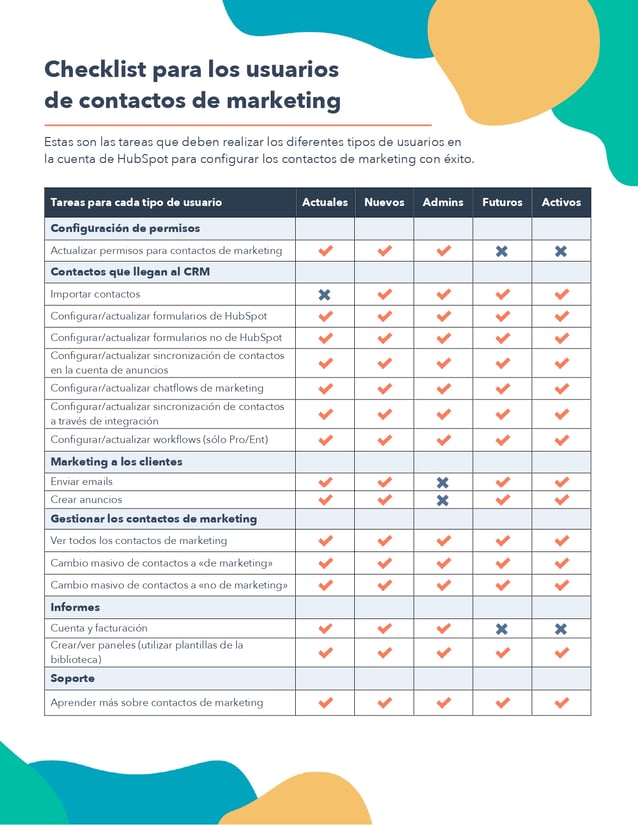Index Content
Since the early days of marketing, you had to pay a fixed price for all contacts, which meant that you not only paid for contacts who received your marketing communications, but also for those who had unsubscribed, bounced back, or even for people who had already moved on to talk to the sales team or were already customers. In short, users were paying for contacts who were not targeted by paid advertising or email marketing campaigns.
Given this difficulty, Hubspot's software offers a new way to manage contacts. Marketing contacts are people who have a relationship with a company or brand and can help promote it or influence its image. Marketing contacts can be customers, suppliers, business partners, influencers, media or any other person or organisation that can have an impact on the perception of the company or brand. It is important to have a good relationship with these contacts as they can be a valuable source of information and can help spread the company's message to a wider audience.
With HubSpot's marketing contacts, they allow you to target your budget exclusively to contacts who receive mailings or are considered a potential audience. Find out more about HubSpot's contact software in our blog post. Plus enjoy free storage for up to one million non-marketing contacts. Sales and marketing support teams become closer to their prospects and customers.
Be sure and encourage them to record interactions in the company's customer relationship management (CRM) system. By integrating it into their compensation strategy, they gain access to influencers and decision makers that may not be found in third-party contact data sources. The CRM system can manage this data easily and efficiently.
 Source: Hubspot Academy
Source: Hubspot Academy
Contact data is a set of data that contains information about individuals relevant to a company's prospects. These data sets are primarily related to organisational or institutional data about individuals. Contact data is personally identifiable information that is subject to a number of global and regional policies that protect the privacy of registrants. Contact data is useful for the development and growth of a marketing strategy. However, the collection of this information has a positive impact on sales and service teams.
It offers multiple advantages.
One of the most eye-catching is that the platform offers one place where all contacts can be grouped together. Simplify the process by keeping all your contacts within HubSpot
HubSpot eliminates endless excel spreadsheets with contact data by offering a platform where all relevant contact data is integrated.
Classify new categories using a quick setup or a simple contact workflow such as "Marketing" or "Non-Marketing", directly in a way that cleans and organises the contact database. Provide the ability to use the qualification process to identify and segment, unsubscribe or reject contacts.
Each new contact you create in your HubSpot portal has a marketing status. For contacts created with certain tools, you can select the desired standard. You can customise the default status of the contacts created by:
- Imports
- Chatflows (live chats and bots)
- Forms
- Integrations
Automatically configure the presence of contacts using workflows. If you use workflows, you can automatically configure contacts as either "marketing" or "non-marketing" depending on their characteristics.
Standardise your database cleansing process. Create a standardised process that can be repeated regularly and allow for the identification of incorrect or incomplete information for correction or removal. This can be done through a qualification process carried out at the start of the contract, such as during monthly checks or renewals.
When choosing a contact method, the goal is engagement, at least from a sales and marketing perspective. The main ones are the interests of the contacts. You can have the most accurate database, but what good is it if the people you represent don't believe your product meets their needs? By creating your own database of contacts who will be interested in your company's digital environment, you can create effective metrics to gradually identify them as you continue to interact with them. The contact information provided by the vendor is very useful. Combine them now. Most importantly, make sure you have up-to-date data on existing customers.




